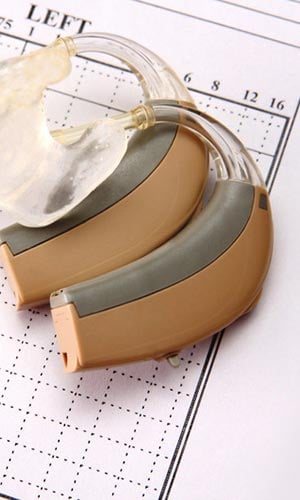Time To Read: 7 minutes
It's inevitable. The older we get, the worse our hearing becomes. But that's only part of the story. We explore the subject here:
- You hear with your brain and not your ears
- Hearing aids and communication tactics for hearing in noise
You’re at a family gathering, sitting on a long table with family and friends. Multiple conversations are going on around. There is an interesting conversation going on in front of you. You decide to lean forward to hear more, yet you find it hard to zone in, it just feels like a wall of noise. Before giving up, you decide to adjust your hearing aid.
You start to think, If I turn the hearing aid volume up I might be able to hear the conversation better, however I will be increasing the noise. If I turn the hearing aid down I reduce the background noise but I’ll miss the clarity of the conversation. You remember your audiologist mentioning that your digital hearing aids are automatic, yet they don’t seem to be doing much. You also remember the discussion regarding something about a directional program but it seems like it’s not making much of a difference.
For most people with hearing loss this is a common dilemma. This may have been you not that long ago during the Christmas holidays. The issue with background noise is that it makes it too difficult to distinguish speech from the noise. A common complaint we hear is that the hearing aid only intensifies the background noise thus making it significantly more difficult to communicate in noisy environments.
Hearing speech in noise is a very complex process, which we hope to go in more detail in later blogs. Today we want to talk about why you may be having difficulties hearing in noise and why the hearing aid may seem to be ineffective in noise.

"You hear with your brain not your ears"
Cognition is defined as mental processes. It is anything that involves thinking, understanding, learning, remembering, understanding speech, etc. Listening effort would be how hard someone is working to understand speech. It is the cognitive resources applied to understand speech or how tired someone is while they are listening to speech. Listening effort can be a problem because, as humans, our cognitive resources and attentional capacity are finite and can be affected by several factors including intent, arousal level, novelty, emotion, personal significance, social cues in the context of conversation (Ormrod, 2008). If we are using more resources to understand speech, there are fewer resources available for other things like memory, recall, or learning, a process know as Resource Allocation (Gopher and Sanders, 1984). These factors compete with listening effort and can make someone feel tired and disengaged from a conversation.
A 2013 study performed by Desjardins & Doherty, showed that when participants were fitted with appropriate hearing aids for their hearing loss, they performed just like their peers with normal hearing. The hearing aids were able to compensate for the effects of hearing loss on listening effort, however the hearing aids did not counteract the effect of age. In other words, if you are amongst your peers and finding it difficult to communicate in a noisy environment, then it is quite possible that your peers are struggling as well. Sometimes it might be worthwhile asking your partner/friend if they are finding it difficult to communicate in that environment, almost always they would be in the same position as you.
Hearing Aids and Communication Tactics for Hearing in Noise:

- Communication will always be optimal with the person sitting immediately next you, increasing distance will prove to be quite challenging (even for someone with normal hearing).
- If possible make sure you have your back to the noise source. Most modern hearing aids are automatic, when in a noisy environment the hearing aid becomes more directional (forward focusing).
- If possible put the hearing aid into its directional program.
- As a last resort, reduce the overall volume of the hearing aid. This will only improve comfort, and will invariably reduce overall speech understanding in noise.
An Access Economics Report on The Economic Impact and Cost of Hearing Loss in Australia, found that 1/6 Australians have a hearing loss. Prevalence rates for hearing loss are associated with increasing age, rising to three in every four people aged over 70 years. Hearing loss is projected to increase to 1 in every 4 Australians by 2050.
If you or a loved one is having difficulty communicating in groups, it is best to have get in contact with a good audiologist.
References:
Desjardins, J. L., & Doherty, K. A. (2013). Age-related changes in listening effort for various types of masker noises. Ear and hearing, 34(3), 261-272.
Economics, A. (2006). The economic impact and cost of hearing loss in Australia. A report by Access Economics P/L, Canberra.
Gopher, D., & Sanders, A. F. (1984). S-Oh-R: Oh stages! Oh resources!. In Cognition and motor processes (pp. 231-253). Springer Berlin Heidelberg.
Ormrod, J. E. (2008). Human learning. Upper Saddle River, NJ: Merrill.
Further Reading
Value Hearing cares about you and your on-going hearing health. We look at some of the serious effects to your health and ongoing quality of life.